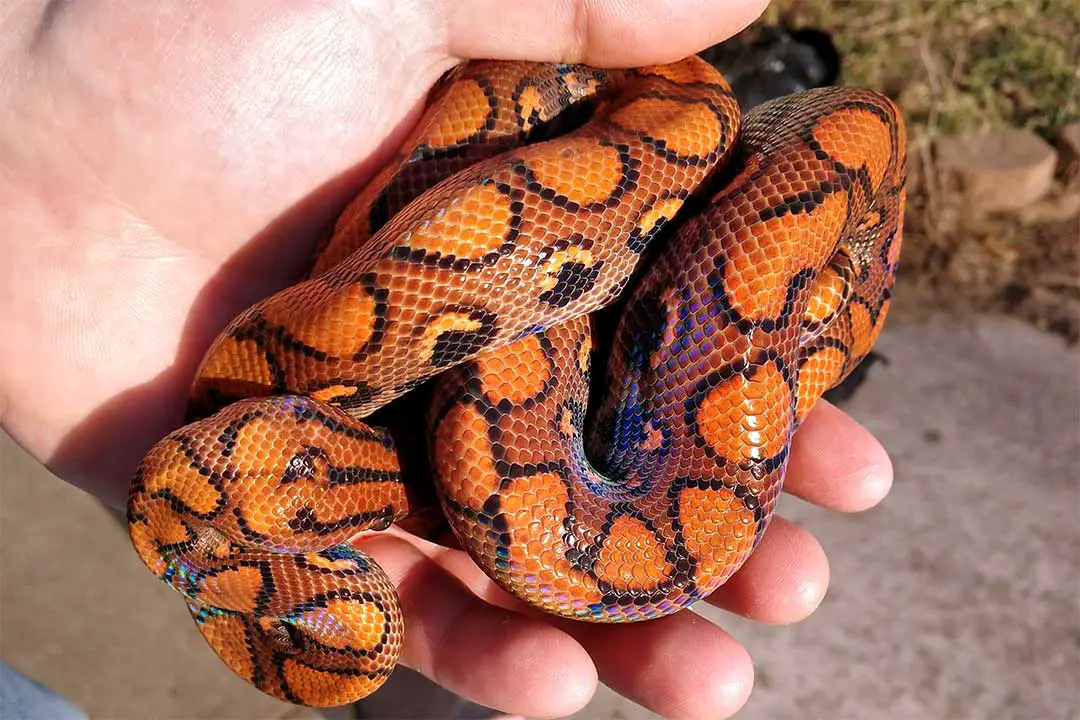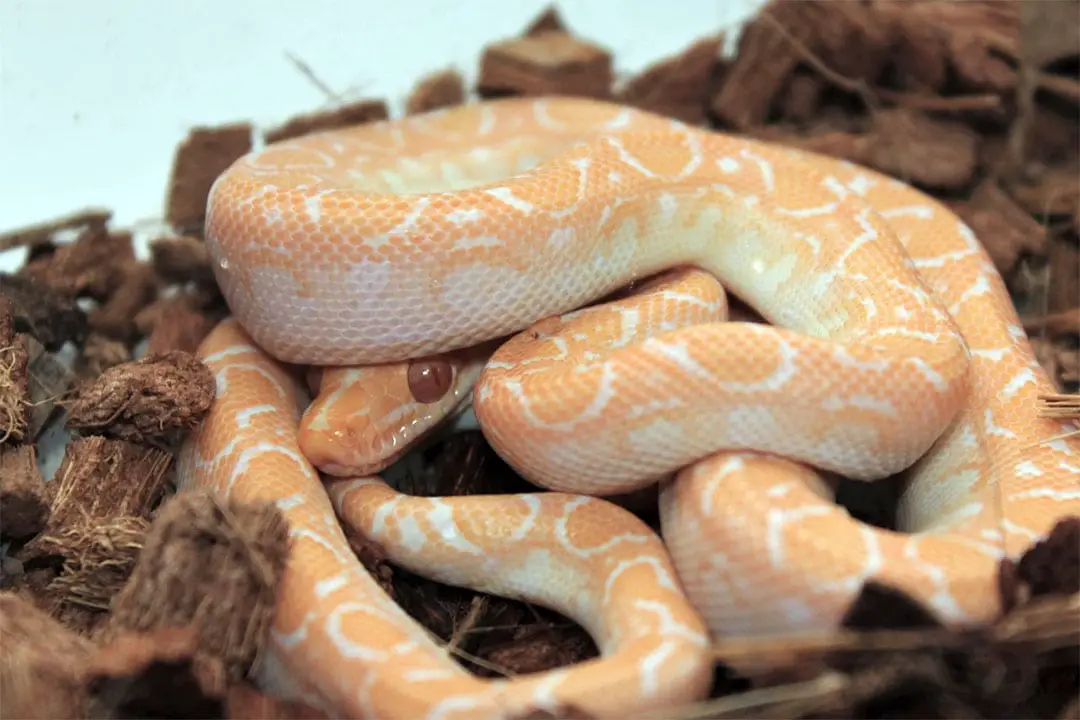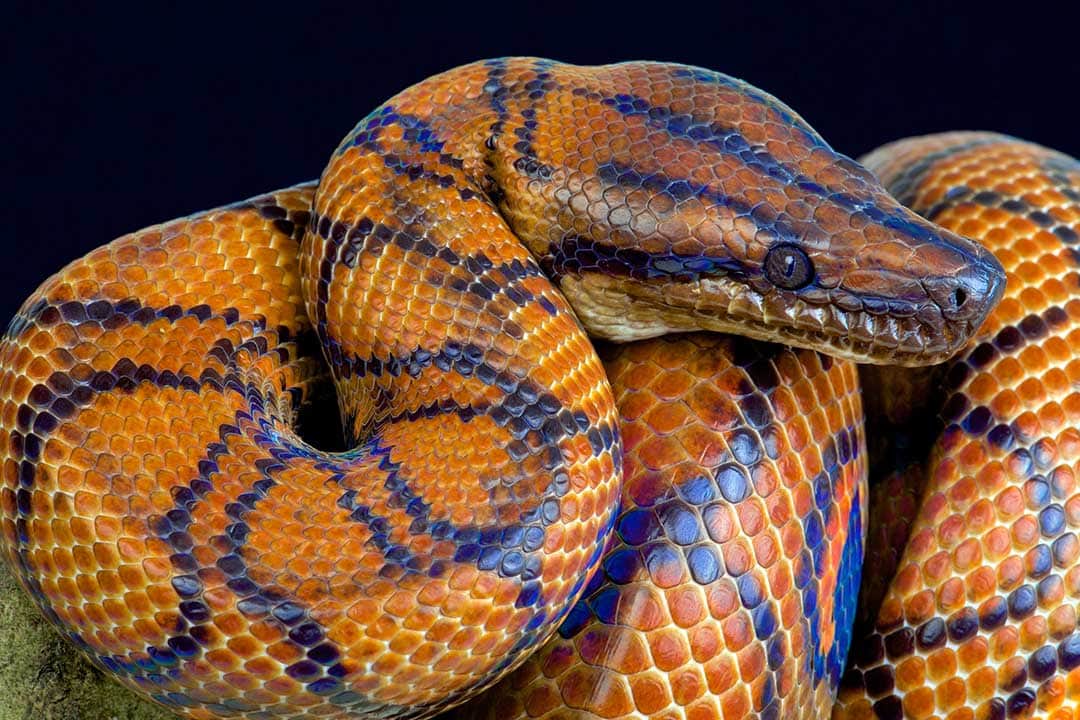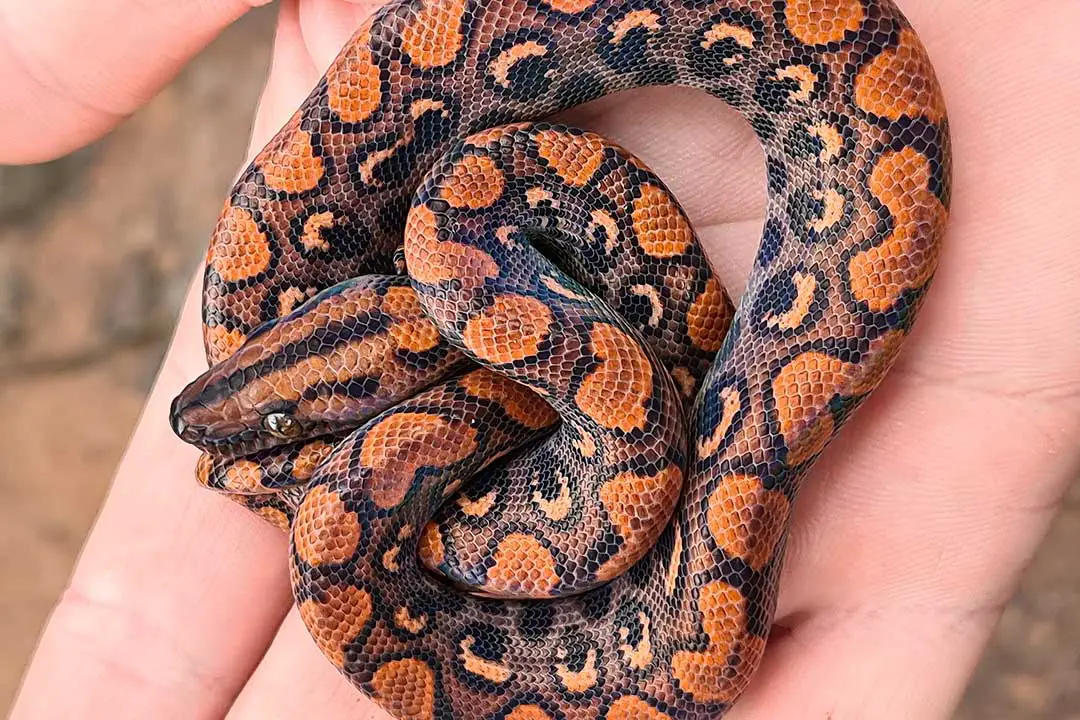The Brazilian rainbow boa (Epicrates cenchria) is a beautiful snake native to Central and South America. Here are some facts about these wonderful animals.
1. Unique Structural Color
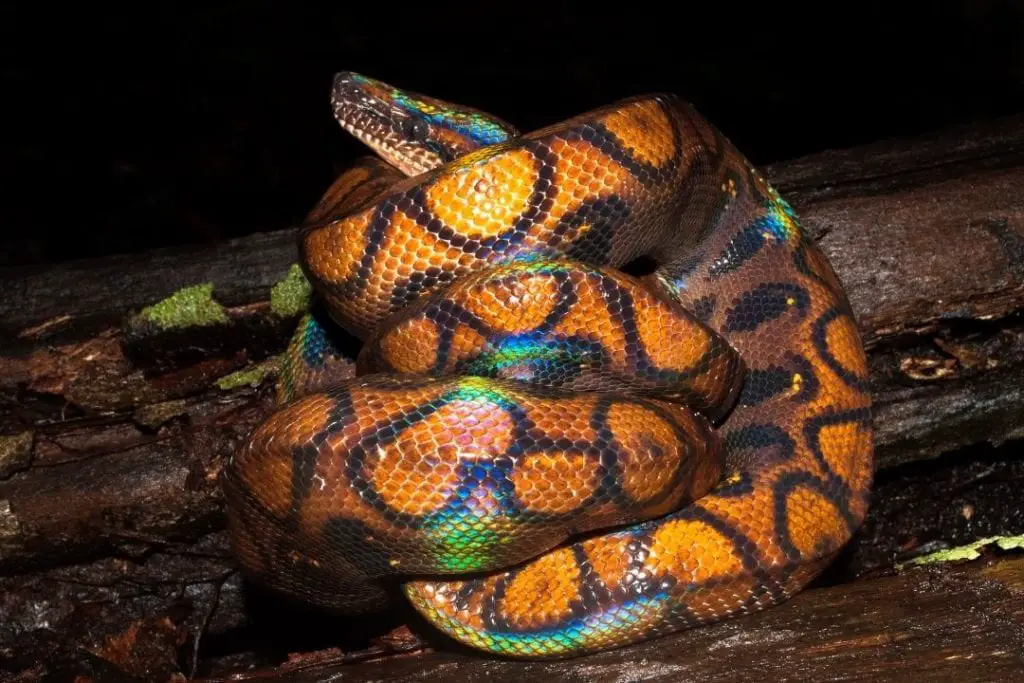
Rainbow boas are famous for their colorful scales. If you see a Brazilian rainbow boa, you will notice that it is a brown or reddish snake with black rings on its back.
When the snake is in the right lighting, you will see a rainbow sheen to its scales.
This is caused by the structure of the scales. Many animals appear to be certain colors because of the structure of their scales or feathers rather than because of pigments.
When light hits the scales, you will see flashes of blue, purple, and green light refracting. This gives the snake its characteristic sheen.
When these snakes are kept in captivity, a full spectrum lighting system on a timer helps show off their beautiful scales.
2. They are Primitive Snakes
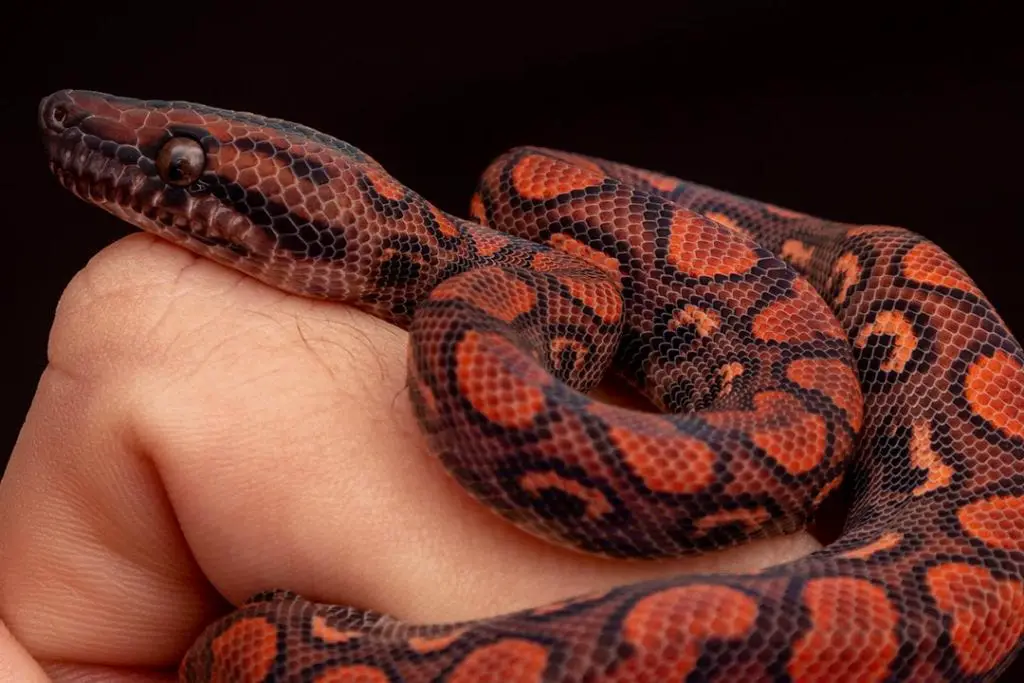
Brazilian rainbow boas are members of Boidae. This means that they are considered primitive snakes. The advanced snakes include colubrids like garter snakes in addition to venomous snakes.
Advanced snakes frequently have venom. They also only have one function lung and no vestigial limbs. Boas like the Brazilian rainbow boa retain many ancestral features of snakes.
This includes having two working lungs, no venom glands, and a vestigial pelvis and limbs. If you look near the cloaca of a Brazilian rainbow boa, you will notice a pair of bony spurs.
These are typically larger in males. These are used during mating. These spurs are connected to a pelvis. This means that these spurs are actually the vestigial remains of the back limbs that the ancestors of snakes had millions of years ago.
3. Rainbow Boas Give Live Birth
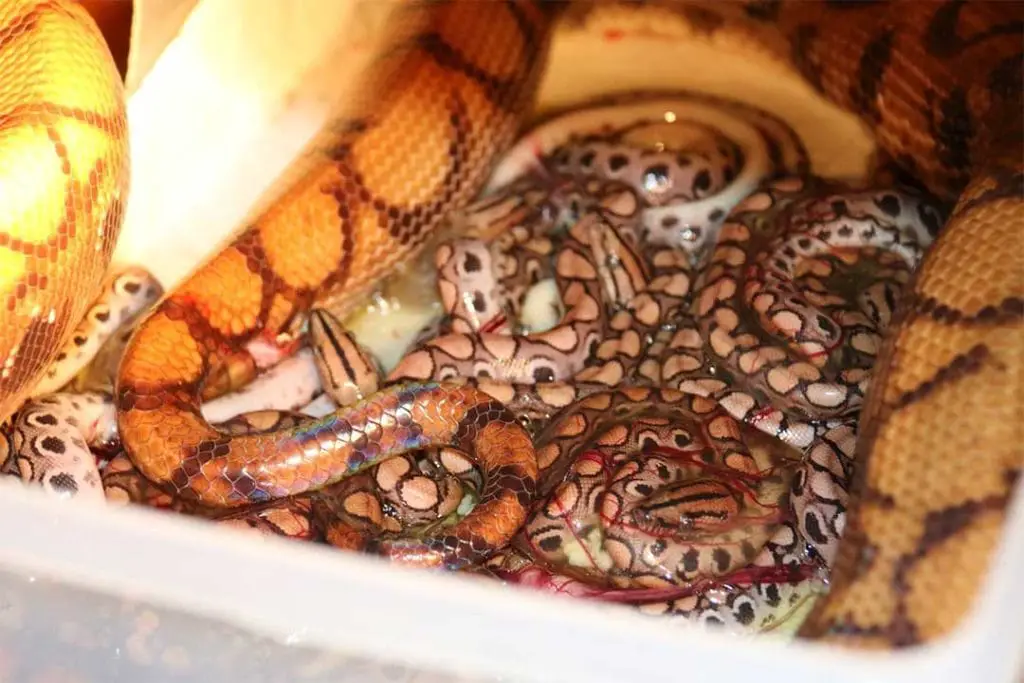
An interesting fact about boas like the Brazilian rainbow boa is how they reproduce. Brazilian rainbow boas give birth to live young instead of laying eggs.
These snakes become sexually mature after they reach 4 feet for males and 4.5 feet for females. The breeding season is typically November to January.
Gestation takes 5 months and the litter size is typically 11-16 snakes. The babies are fully independent at birth. They do not practice parental care after birth.
4. Hunting
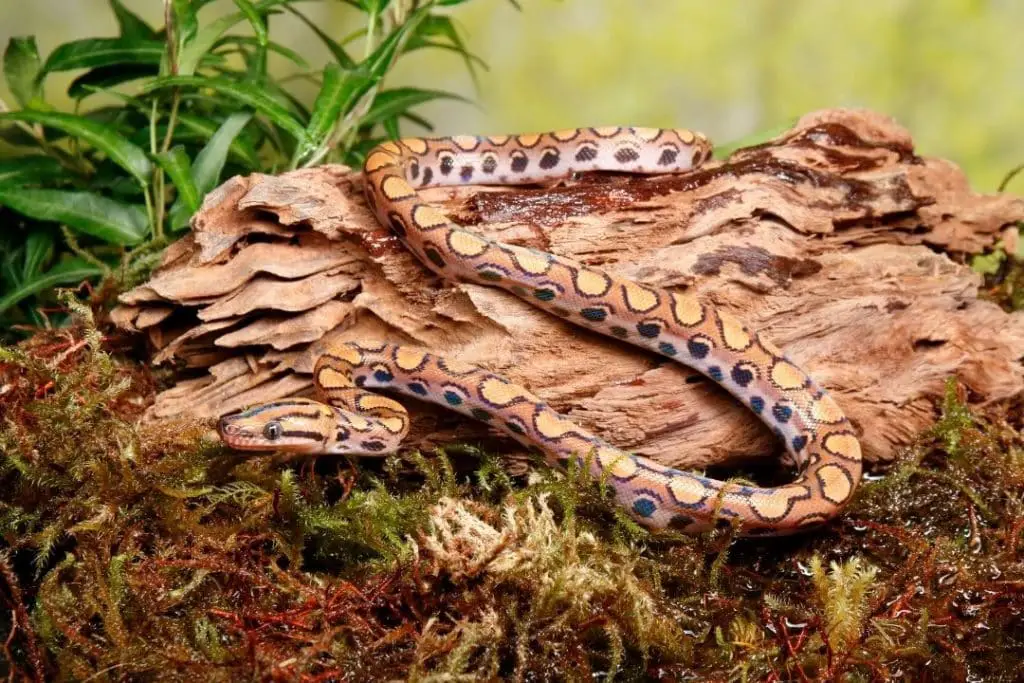
Brazilian rainbow boas are obligate carnivores. They need to consume whole prey animals to stay healthy. These terrestrial snakes are ambush predators.
They use a strong sense of smell and their heat-sensitive pits to track down and strike prey. They primarily eat warm-blooded prey like rodents and birds.
Other prey items can include lizards and even small mammals like young rabbits. They have been spotted swimming in the wild and hunting aquatic prey that includes amphibians.
Like many snakes that can sense heat, they are nocturnal. These snakes take between 24 and 72 hours to digest a meal. They cannot eat prey that is much larger than the widest part of their body.
If the snake tries to eat something that is too large, it will regurgitate the prey item. Most prey will top out at about 10% of the snake’s body weight. This is what these snakes are fed in captivity.
5. The Brazilian Rainbow boa is the Largest Rainbow Boa
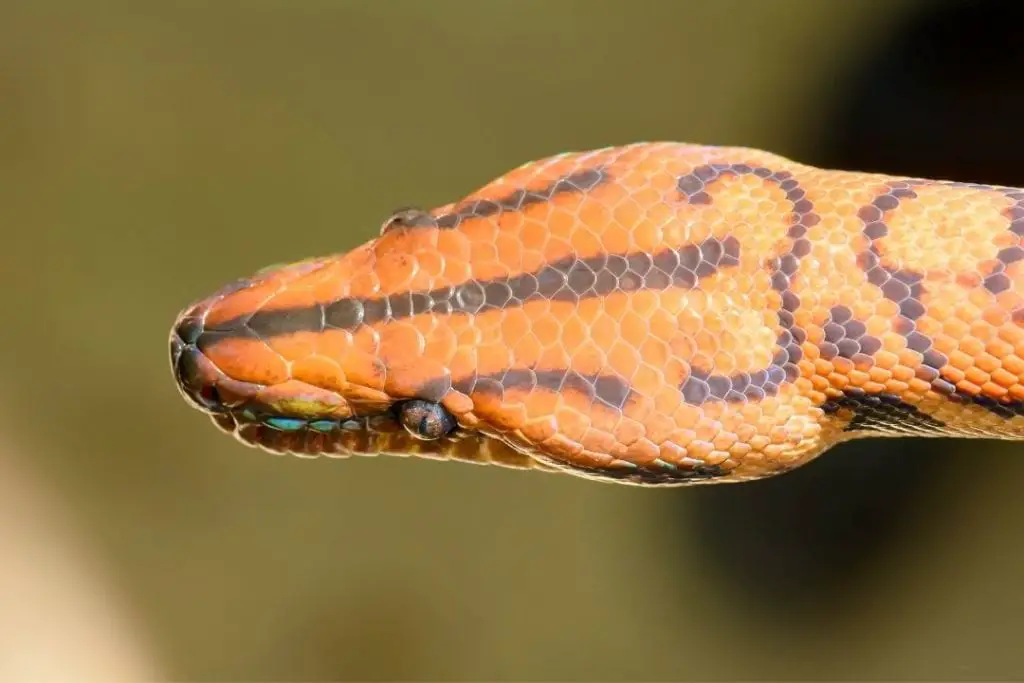
The Brazilian rainbow boa can grow to over 6 feet long and can weigh up to 3 pounds.
Males are typically smaller than females. While they are not very large snakes, the Brazilian rainbow boa is the largest of the rainbow boas.
This means that captive animals need a larger enclosure than the other rainbow boa species. They prefer more floor space than height.
6. Range and Climate
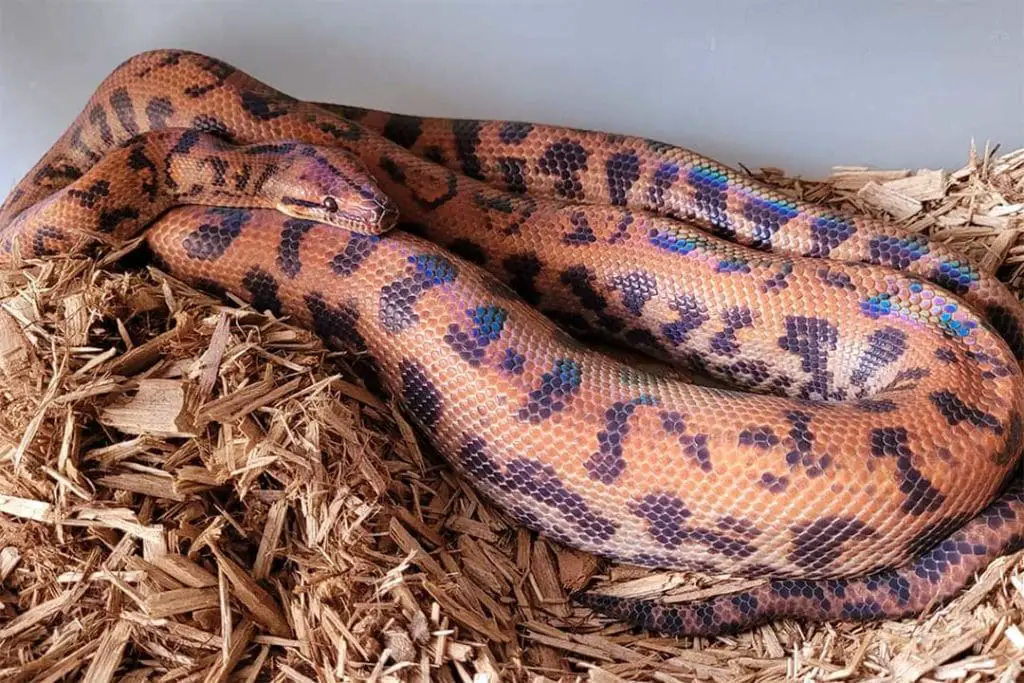
Brazilain rainbow boas are found in Costa Rica, Suriname, Panama, Guyana, Venezuela, and Brazil. They can be found in humid areas like tropical grasslands and forests.
They prefer high humidity areas and stay in places where the temperature is between 73 and 90 degrees for the vast majority of the year. Their region experiences heavy rainfall of up to 137 inches a year.
Captive rainbow boas require temperatures in their wild range and higher humidity than many other species. Tropical species like Brazilian rainbow boas require special caging to make sure the enclosure stays humid. If the enclosure is too dry, the snake will experience dehydration and shedding problems.
7. Constrictors
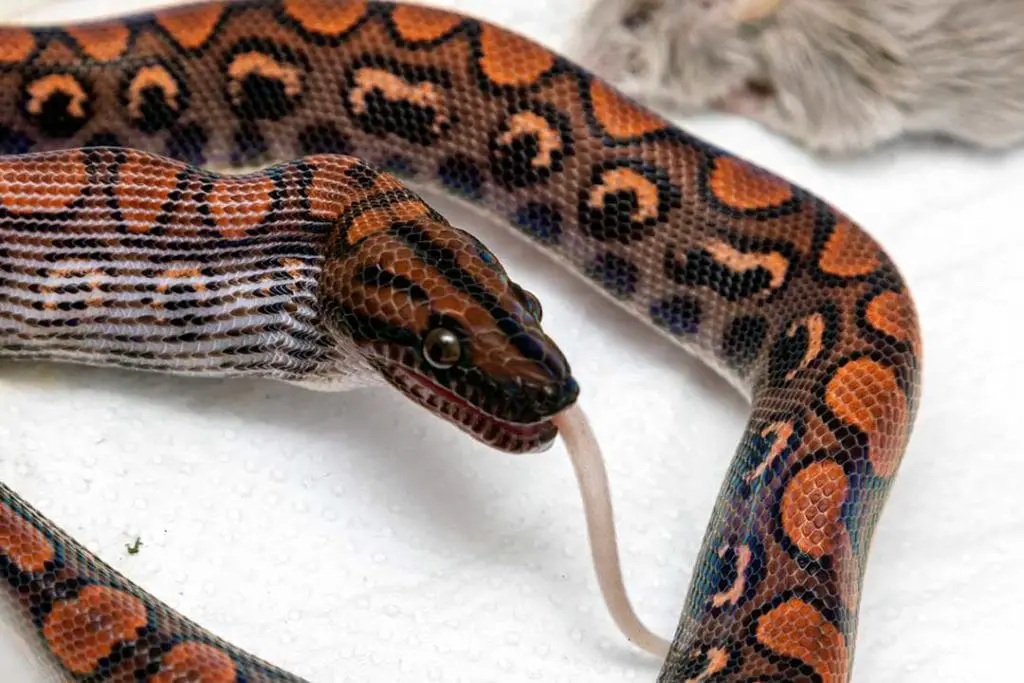
Like all boas, Brazilian rainbow boas are not venomous. Instead, they rely on constriction to kill their prey. A Brazilian rainbow boa will pick a likely spot and wait for prey of the right size to come by.
Once they spot a target, the boa will strike and try to bite the prey.
Once they bite down, the snake will try to wrap loops of the body around the prey.
It will squeeze down and constrict the prey. This constriction cuts off the flow of blood to the animal and causes rapid death.
Constrictors like boas do not squeeze the breath out of their prey or break bones to kill. They rely on cutting off blood flow to cause death.
9. Threats
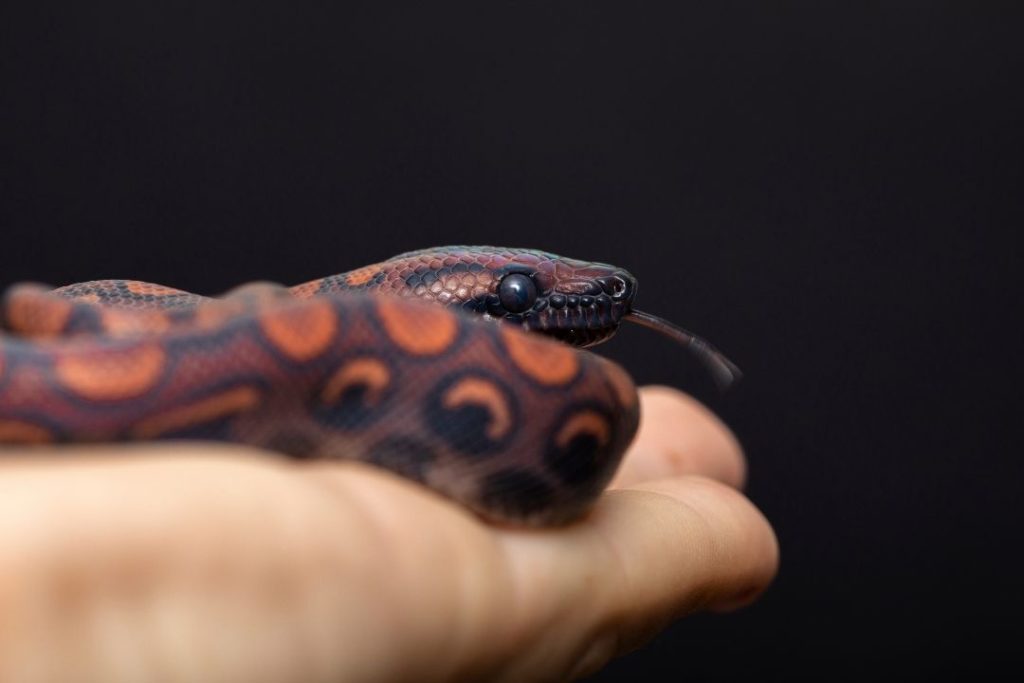
An adult Brazilian rainbow boa does have predators to worry about, but not as many as a baby. Adults can fall prey to crocodilians in their range.
Babies have to worry about birds and many other predators. They typically hide to avoid predators. Most adults are rarely preyed upon, but babies are a frequent snack for predators.
Snakes in the wild need to worry about prey availability, dehydration, and overheating. These snakes are very vulnerable to overheating so they tend to stick near bodies of water.
They are not considered endangered since they are listed as Least Concern on the IUCN red list. They are collected for the pet trade, but these snakes breed well in captivity. This makes it easy to acquire one without putting wild populations at risk.
10. Captivity
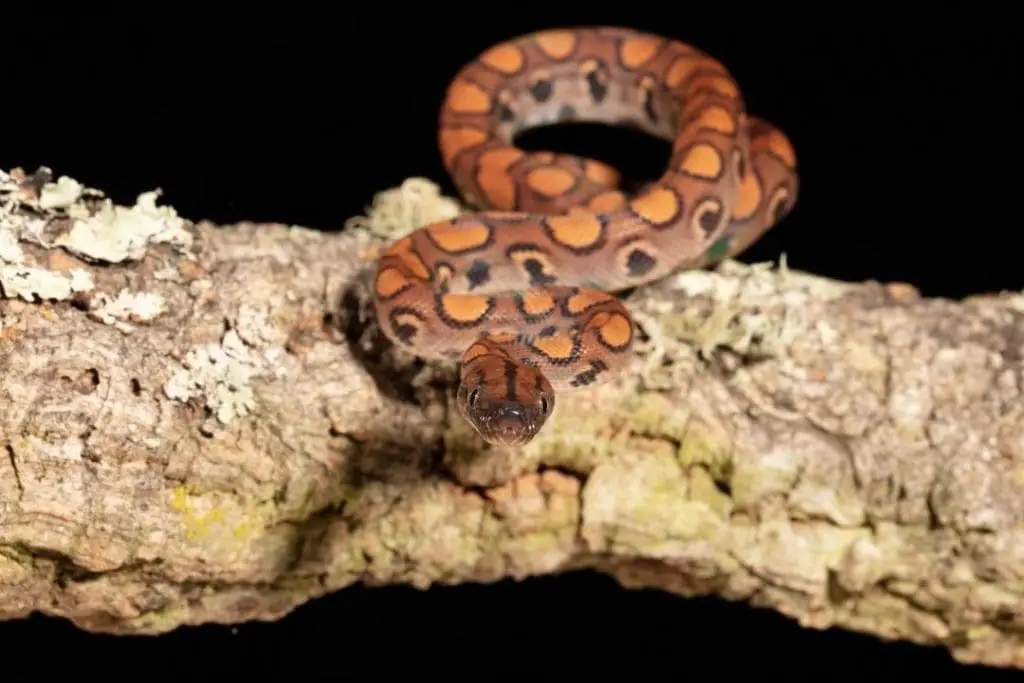
Brazilian rainbow boas actually make pretty good pets. You should have some experience with keeping snakes and other reptiles before you consider getting one.
This is partly because they need more care and partly because they have more damaging bites than some other commonly kept snakes.
They can enjoy handling sessions if you start handling them gently from a young age. They are somewhat more expensive than other snakes, but you can find them for sale.
If you want one, be sure you pick a captive-bred animal. Wild-caught snakes do not always deal well with captivity.
They also frequently have health issues like heavy parasite loads that can spread to other snakes in your home.
Conclusion
Brazilian rainbow boas are fascinating snakes. If you have any questions or any further fun facts, please leave them in the comments below.
